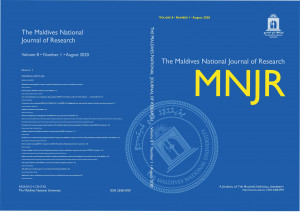Production of Lip Balm From Stingless Bee Honey
DOI:
https://doi.org/10.62338/nk4keh87Keywords:
Cosmetic, lip balm, honey, natural ingredients, moisturizing, stabilityAbstract
India Cosmetics is used daily by majority of the people worldwide. Nowadays, consumer demand for natural based product cosmetics as they are safe to use and environmentally friendly. Lip balm is a cosmetic or lip care product whose purpose is to prevent dry and chapped lips. The quality of lip balm is directly linked with the basic ingredients used in the formulation. This work involved the formulation of lip balm from natural ingredients. Various composition of beeswax, shea butter, stingless bee honey, oils and colorant were studied to obtain the best formulation. Stingless bee honey was added to the lip balm formulation as moisturizing agent. The physico-chemical properties of the formulations were determined including melting point, stability, moisture content, color intensity, sensory test for human acceptance and microbial test. From the results, the formulation of lip balm from beeswax, shea butter and oil with ratio 1:1:1 was the best formulation. It has high melting point and has stable condition in low and room temperature. The presence of honey in the formulation assisted to increase the moisture content in the lip balm. Besides that, for color intensity, natural colorant from fruit juice and extraction contributed the color to the lip balm but the color intensity was lower compared to powder colorant. Lastly, the formulation of lip balm from beeswax, shea butter and oil with ratio of 1:1:1 met the consumer acceptance as the highest sensory test score was obtained for this formulation.
References
Alessandrea, R., & Michelli, F. (2013). Stability Evaluation of Organic Lip Balm. International Journal of Pharma and Bio Science, 37-41.
Awang, B., Buhri, A., C.M., H., & R., M. (2002). Lipstick Formulation: Effect of composition variation on physical properties and consumer acceptance. Applied Science, 79-88.
Bennett, J. (2016, September 9). Cosmetics and Skins. Retrieved November 12, 2016, from What is a cosmetic?: http://www.cosmeticsandskin.com/aba/what-is-a-cosmetic.php
Diane, H. (2011). Journal of Microbiology & Biology Education. Perfecting Your Spread Plate Technique, 204-205.
Harris, L. (2007). Strawberries: Safe Methods to Store, Preserve, and Enjoy. Food, Safety and Preservations Journal, 5-7.
Hilda, B. (1993). Poucher’s Perfumes, Cosmetics and Soap (9th Edn). Cambridge: Chapman and Hall.
Isla, M., Cordero, A., Diaz, L., Perez, E., & Vit, P. (2013). Cosmetic properties of honey. 1. Antioxidant. Stingless bees process honey and pollen in cerumen pots, 1-8.
Manisha, D. M., & Shyamapada, M. (2011). Honey: Its medicinal property and antibacterial activity. Asian Pacific Journal of Tropical Biomedicine, 154-160.
Mariani, R., Awang, B., & Chong, M. (2007). Optimisation of Natural Ingredient Based Lipstick Formulation by Using Mixture Design. Applied Science, 2099-2103.
Mayuri, K., Suruchi, V., & Sonia, S. (2015). Review on Natural Lip Balm. International Journal of Research in Cosmetic Science, 1-7.
Nicole, V., Jessica, R. L., & Thomas, C. K. (2014). Quality Control: Microbial Limit Tests for Nonsterile Pharmaceuticals, Part 2. International Journal of Pharmaceutical Compounding, 305-310.
Norazlin, M., Mahiran, B., Puziah, H., & Siti Salwa, A. (2015). Improved properties of lipstick formulation with engkabang fats. Asian Journal of Pharmaceutics.
Shune, & Khin. (2014). Extraction of Betalain Colorant from Peels of Dragon Fruit and It’s Application in Lip Balm. Universities Researh Journal, Vol 7 , No 1



